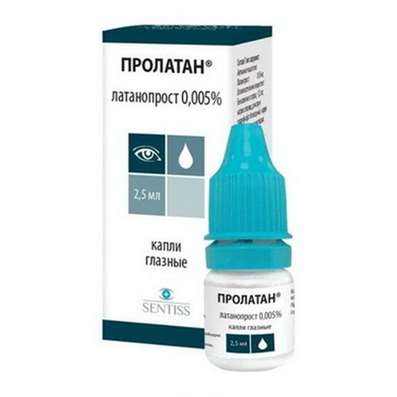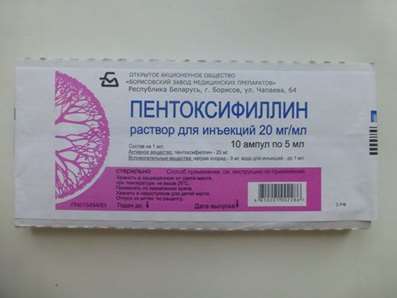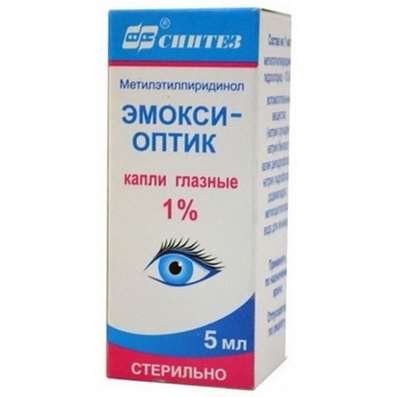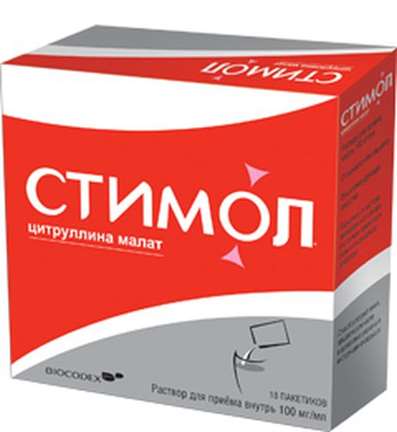Instruction for use: Ropivacaine Kabi
I want this, give me price
Dosage form: solution for injection
Active substance: Ropivacaine *
ATX
N01BB09 Ropivacaine
Pharmacological group:
Local Anesthetics
The nosological classification (ICD-10)
R52.0 Acute pain: Acute pain syndrome; Acute pain syndrome with osteoarthritis; Acute pain syndrome of traumatic origin; Severe pain of a neurogenic nature; Severe pain; Pain syndrome at delivery
R52.9 Unspecified pain: Pain after cholecystectomy; Pain shooting; Non-malignant pain syndrome; Obstetric and gynecological pain; Pain syndrome; Pain syndrome in the postoperative period; Pain syndrome in the postoperative period after orthopedic operations; Painful syndrome of inflammatory genesis; Pain syndrome of non-oncological genesis; Pain syndrome after diagnostic procedures; Pain syndrome after the diagnostic intervention; Pain syndrome after operations; Pain syndrome after surgery; Pain syndrome after orthopedic surgery; Pain syndrome after trauma; Pain syndrome after removal of hemorrhoids; Pain syndrome after surgery; Pain syndrome with inflammation of non-rheumatic nature; Pain syndrome with inflammatory lesions of the peripheral nervous system; Pain syndrome in diabetic neuropathy; Pain syndrome in acute inflammatory diseases of the musculoskeletal system; Pain syndrome in the pathology of tendons; Pain syndrome with smooth muscle spasms; Pain syndrome with smooth muscle spasms (renal and biliary colic, intestinal spasm, dysmenorrhea); Pain syndrome with spasms of smooth muscles of internal organs; Pain syndrome with spasms of smooth muscles of internal organs (renal and biliary colic, intestinal spasm, dysmenorrhea); Pain syndrome with injuries; Pain syndrome with injuries and after surgical interventions; Pain syndrome in chronic inflammatory diseases of the musculoskeletal system; Pain syndrome with duodenal ulcer; Pain syndrome with peptic ulcer disease; Pain syndrome with peptic ulcer of stomach and duodenum; Painful sensations; Pain during menstruation; Pain syndromes; Painful conditions; Painful leg fatigue; Gum pain when wearing dentures; The pain of exit points of cranial nerves; Painful irregular menstruation; Painful dressings; Painful muscular spasm; Painful growth of teeth; Pain; Pain in lower limbs; Pain in the area of the operating wound; Pain in the postoperative period; Pain in the body; Pain after diagnostic interventions; Pain after orthopedic surgery; Pain after surgery; Pain in the flu; Pain in diabetic polyneuropathy; Pain in burns; Pain in intercourse; Pain during diagnostic procedures; Pain during therapeutic procedures; Pain for colds; Pain with sinusitis; Pain in case of injury; Pain of a traumatic nature; Pain in the postoperative period; Pain after Diagnostic Interventions; Pain after sclerosing therapy; Pain after surgery; Postoperative pain; Postoperative and post-traumatic pain; Post-traumatic pain; Pain when swallowing; Pain in infectious inflammatory diseases of the upper respiratory tract; Pain with burns; Pain with traumatic muscle damage; Pain in case of injury; Pain when extracting a tooth; Pain of traumatic origin; Pain caused by spasm of smooth muscles; Severe pain syndrome; Severe pain syndrome of traumatic origin; Postoperative pain; Postoperative pain syndrome; Post-traumatic pain; Post-traumatic pain syndrome; Torpid pain syndrome; Traumatic pain; Moderate pain; Moderately expressed pain syndrome; Moderate pain syndrome; Polyartralgia in polymyositis
T88.9 Complication of surgical and therapeutic intervention, unspecified: Pain syndrome in the postoperative period; Pain syndrome in the postoperative period after orthopedic operations; Pain syndrome after diagnostic procedures; Pain syndrome after the diagnostic intervention; Pain syndrome after operations; Pain syndrome after surgery; Pain syndrome after orthopedic surgery; Pain syndrome after removal of hemorrhoids; Pain syndrome after surgery; Pain syndrome with an excimer laser; Pain syndrome with injuries and after surgical interventions; Pain syndromes in dental practice; Painful diagnostic interventions; Painful diagnostic manipulation; Painful instrumental diagnostic procedures; Painful instrumental manipulation; Painful treatment procedures; Painful manipulation; Painful dressings; Painful therapeutic interventions; Painful surgical interventions; Pain in the area of the operating wound; Pain in the postoperative period; Pain after diagnostic interventions; Pain after orthopedic surgery; Pain after surgery; Pain during diagnostic procedures; Pain during therapeutic procedures; Pain in orthopedics; Pain in the postoperative period; Pain after Diagnostic Interventions; Pain after sclerosing therapy; Pain after dental interventions; Pain after surgery; Postoperative pain; Postoperative and post-traumatic pain; Pain when extracting a tooth; Inflammation after surgery and trauma; Inflammation after orthopedic surgery; Inflammatory processes after surgical interventions; Inflammatory syndrome after surgery; Festering postoperative fistulae; Operating wound; Complications after tooth extraction; Postoperative pain; Postoperative pain syndrome; Postoperative pain
Z100.0 * Anesthesiology and premedication: Abdominal surgery; Adenomectomy; Amputation; Angioplasty of the coronary arteries; Carotid artery angioplasty; Antiseptic treatment of skin in wounds; Antiseptic treatment of hands; Appendectomy; Atheroctomy; Balloon coronary angioplasty; Vaginal hysterectomy; Venous bypass; Interventions on the vagina and cervix; Interventions on the bladder; Interference in the oral cavity; Reconstructive-reconstructive operations; Hand hygiene of medical personnel; Gynecological Surgery; Gynecological interventions; Gynecological operations; Hypovolemic shock during surgery; Disinfection of purulent wounds; Disinfection of the edges of wounds; Diagnostic Interventions; Diagnostic procedures; Diathermocoagulation of the cervix; Long-term surgeries; Replacement of fistulous catheters; Infection in orthopedic surgical interventions; Artificial heart valve; Kistectomy; Short-term outpatient surgery; Short-term operations; Short-term surgical procedures; Cryotyreotomy; Blood loss during surgical interventions; Bleeding during surgery and in the postoperative period; Laser coagulation Laserocoagulation; Laser retinopathy of the retina; Laparoscopy; Laparoscopy in gynecology; Likvornaya fistula; Small gynecological operations; Small surgical interventions; Mastectomy and subsequent plastic surgery; Mediastinotomy; Microsurgical operations on the ear; Mukinging operations; Suturing; Minor surgery; Neurosurgical operation; Eclipse of the eyeball in ophthalmic surgery; Orchiectomy; Pancreatectomy; Pericardectomy; The rehabilitation period after surgical operations; Reconvalence after surgical intervention; Percutaneous transluminal coronary angioplasty; Pleural Thoracocentesis; Pneumonia postoperative and post traumatic; Preparing for surgical procedures; Preparing for a surgical operation; Preparation of the surgeon's arms before surgery; Preparation of the colon for surgical interventions; Postoperative aspiration pneumonia in neurosurgical and thoracic operations; Postoperative nausea; Postoperative hemorrhage; Postoperative granuloma; Postoperative shock; Early postoperative period; Myocardial revascularization; Resection of the apex of the tooth root; Resection of the stomach; Bowel resection; Resection of the uterus; Liver resection; Small bowel resection; Resection of a part of the stomach; Reocclusion of the operated vessel; Gluing of tissues during surgical interventions; Suture removal; Condition after eye surgery; Condition after surgery in the nasal cavity; Condition after gastrectomy; Condition after resection of the small intestine; Condition after tonsillectomy; Condition after removal of duodenum; Condition after phlebectomy; Vascular Surgery; Splenectomy; Sterilization of surgical instrument; Sterilization of surgical instruments; Sternotomy; Dental surgery; Dental intervention on periodontal tissues; Strumectomy; Tonsillectomy; Thoracic surgery; Total gastrectomy; Transdermal intravascular coronary angioplasty; Transurethral resection; Turbinectomy; Removal of a tooth; Cataract removal; Removing Cysts; Removal of tonsils; Removal of myoma; Removal of mobile milk teeth; Removal of polyps; Removal of a broken tooth; Removal of the uterus; Removal of seams; Urethrotomy; Fistula of the luminal ducts; Frontoetmoidogamotomy; Surgical infection; Surgical treatment of chronic ulcers of extremities; Surgery; Surgery in the anus; Surgery on the large intestine; Surgical practice; Surgical procedure; Surgical interventions; Surgical interventions on the digestive tract; Surgical interventions on the urinary tract; Surgical interventions on the urinary system; Surgical interventions on the genitourinary system; Surgical intervention on the heart; Surgical procedures; Surgical operations; Surgical operations on veins; Surgical intervention; Vascular Surgery; Surgical treatment of thromboses; Cholecystectomy; Partial resection of the stomach; Extraperitoneal hysterectomy; Percutaneous transluminal coronary angioplasty; Percutaneous transluminal angioplasty; Coronary artery bypass grafting; Extirpation of the tooth; Extirpation of infant teeth; Extirpation of pulp; Extracorporeal circulation; Extraction of the tooth; Extraction of teeth; Extraction of cataracts; Electrocoagulation; Endourological interventions; Episiotomy; Ethmoidotomy; Complications after tooth extraction
Composition
| Solution for injection | 1 ml |
| Composition see table 1 |
| Component | Ropivacaine Kabi, Solution for Injection | |||
| 2 mg/ml | 5 mg/ml | 7,5 mg/ml | 10 mg/ml | |
| Active solution | ||||
| Ropivacaine hydrochloride * | 2 ์ใ | 5 ์ใ | 7,5 ์ใ | 10 ์ใ |
| Excipients | ||||
| Sodium chloride | 8,62 mg | 8,06 mg | 7,59 mg | 7,12 mg |
| Hydrochloric acid | q.s. untill pH 46 | |||
| Sodium hydroxide | q.s. untill pH 46 | |||
| Water for injections | untill 1 ml | |||
*In the form of ropivacaine hydrochloride monohydrate according to the analysis results of the series used in the manufacture.
Pharmachologic effectPharmacological action - locally anesthetizing.
Dosing and Administration
Ropivacaine Kabi should be administered only by specialists who have sufficient experience of conducting local anesthesia or under their supervision, with the availability of equipment and drugs for resuscitation.
Solution for injection, 5 mg / ml
For perineural injection (spinal and conduction anesthesia)
Before the beginning of the execution of large blockades should be installed in / in the catheters.
Ropivacaine Kabi is administered slowly or by increasing sequential doses of the drug at a rate of 25-50 mg / min.
To prevent an anesthetic from entering the vessel, an aspirate sample must be performed before and during the administration of the preparation. A random intravascular injection is recognized by a temporary increase in heart rate.
The following table is a guide to the selection of dosage for intrathecal blockade, relief of acute pain syndrome and blockade of peripheral nerves. A minimum dosage sufficient to form an effective blockade should be used. When deciding on the choice of dose, the experience of the clinical specialist and knowledge of the patient's physical condition is important.
Recommendations for dosing of the drug Ropivacaine Kabi for adults and children over 12 years of age (see table 2)
Table 2
| Indications | Concentration of the preparation, mg / ml | Volume of solution, ml | Dose, mg | Start of action, min | Duration of action, h |
| Intrathecal blockade; surgical interventions | 5 | 35 | 1525 | 15 | 26 |
| Indications | Concentration of the preparation, mg / ml | Volume of solution, m | Dose, mg |
| Kupirovanie acute pain syndrome (intraoperative and postoperative); blockade of peripheral nerves, for example iliac inguinal nerve | 5 | 0,50,6 | 2,53 |
There are individual differences in the beginning of the blockade and its duration.
The values in the "Dose" column represent the expected average range of dosages required. For information on the factors that affect the blockade technique and the individual characteristics of patients, reference should be made to standard benefits.
In the absence of a sufficient number of clinical observations, it is not recommended to use Ropivacaine Cubi in children under 1 year of age.
Solution for injection, 2 mg / ml, 7.5 mg / ml, 10 mg / ml
For epidural and perineural administration (conduction and infiltration anesthesia and analgesia)
Adults and children over 12 years. In general, anesthesia in surgical interventions requires higher doses and more concentrated solutions of the drug than with the use of an anesthetic for analgesia. For analgesia (eg, epidural administration to suppress acute pain), lower concentrations and doses are recommended and a dose of 2 mg / ml is usually recommended. For intraarticular administration, a dose of 7.5 mg / ml is recommended. Ropivacaine Kabi 10 mg / mL is recommended for epidural anesthesia, when complete motor blockade is necessary for surgery.
The following tables represent a guide to selecting the dosage for more commonly used blockades. A minimum dosage sufficient to form an effective blockade should be used. When deciding on the choice of dose, the experience of the clinical specialist and knowledge of the patient's physical condition is important.
Recommendations for dosing of the drug Ropivacaine Kabi for adults and children over 12 years of age (see Table 4)
The dosages given in Table 4 are considered sufficient for a successful blockade and should serve as a guideline for use in adult patients. there are individual deviations in the time of the blockade and its duration. The values in the "Dose" column reflect the expected range of averaged required doses.
Table 4
| Indication | Concentration of the preparation, mg / ml | Volume of solution, ml | Dose, mg | Start of action, min | Duration of action, h |
| Anesthesia during surgical interventions | |||||
| Epidural anesthesia at the lumbar level | |||||
| Surgical interventions | 7,5 | 1525 | 113188 | 1020 | 35 |
| 10 | 1520 | 150200 | 1020 | 46 | |
| Cesarean section | 7,5 | 1520 | 1131504 | 1020 | 35 |
| Epidural anesthesia at the thoracic level | |||||
| Postoperative pain blockade and surgery | 7,5 | 515 | 38113 | 1020 | |
| Blockade of large plexus | |||||
| For example, brachial plexus blockade1 | 7,5 | 3040 | 225300 | 1025 | 610 |
| Conducting and infiltration anesthesia | 7,5 | 130 | 7,5225 | 115 | 26 |
| Coping with acute pain syndrome | |||||
| Epidural introduction at the lumbar level | |||||
| Bolus | 2 | 1020 | 2040 | 1015 | 0,51,5 |
| Periodic administration (for example, in the anesthesia of childbirth) | 2 | 1015 (minimum interval 30 minutes) | 2030 | | |
| Extended infusion for | |||||
| - anesthesia of childbirth | 2 | 610 ml/h | 1220 mg/h | | |
| - postoperative analgesia | 2 | 614 ml/h | 1228 mg/h | | |
| Blockade of peripheral nerves | |||||
| For example, blockage of the femoral nerve or interstitial blockade (prolonged infusions or repeated injections) | 2 | 510 ml/h | 1020 mg/h | | |
| Epidural introduction at the thoracic level | |||||
| Extended infusion (for example for postoperative analgesia) | 2 | 614 ml/h | 1228 mg/h | | |
| Conducting blockade and infiltration anesthesia | 2 | 1100 | 2200 | 15 | 26 |
| Intra-articular administration | |||||
| Arthroscopy of the knee joint2 | 7,5 | 20 | 1503 | | 26 |
3 If Ropivacaine Cubi was additionally used for other types of anesthesia, the maximum dose should not exceed 225 mg.
4 Stepwise dosing should be used, the initial dose of about 100 mg (97.55 mg = 13 mL, 105 mg = 14 mL) and administered within 3-5 minutes. Two additional doses, totaling an additional 50 mg, can be administered as needed.
To familiarize with the factors influencing the method of execution of individual blockades, and with the requirements for specific groups of patients, standard guidelines should be used.
To prevent an anesthetic from entering the vascular bed, an aspirate sample must be performed before and during the administration of the preparation. If it is necessary to administer a large dose of the drug, it is recommended to administer a test dose of 3-5 ml of lidocaine with epinephrine. A random intravascular injection is recognized by a temporary increase in heart rate, and a random intrathecal injection is indicated by the spinal block. In case of toxic symptoms, the drug should be discontinued immediately.
Aspiration should be performed before and during the administration of the main dose, which must be administered slowly or step by step, at a level of 25-50 mg / min, closely monitoring the patient's vital functions and maintaining verbal contact with it.
Single administration of Ropivacaine Cubi with epidural blockade for surgery in a dose of up to 250 mg is usually well tolerated by patients.
When blockade of the brachial plexus with 40 ml of the drug Ropivacaine Cabi 7.5 mg / ml, the maximum plasma concentrations of ropivacaine hydrochloride in some patients can reach a value characterized by mild symptoms of toxicity from the CNS. Therefore, the use of a dose above 40 ml of the drug Ropivacaine Cabi 7.5 mg / ml (300 mg ropivacaine hydrochloride) is not recommended.
When using a prolonged blockade, either by continuous infusion or by repeated bolus administration, the risks of achieving a toxic plasma concentration or the occurrence of local nerve damage should be taken into account. The administration of ropivacaine hydrochloride for 24 hours in a dose of up to 800 mg in total for surgical interventions and for postoperative analgesia, and prolonged epidural infusion after surgery at a rate of up to 28 mg / h for 72 hours is well tolerated by adult patients.
For relief of postoperative pain, the following method is recommended: if the epidural catheter was not installed during surgery, after its installation, an epidural blockade with a bolus injection of Ropivacaine Kabi 7.5 mg / ml is performed. Analgesia is supported by ifusion of Ropivacaine Cubi 2 mg / ml. In most cases, to relieve postoperative pain from moderate to severe, infusion at a rate of 6-14 ml / h (12-28 mg / h) provides adequate analgesia with minimal non-progressive motor blockade (using this technique, there was a significant decrease in the need for opioid analgesics ). For postoperative analgesia, Ropivacaine Cubi 2 mg / ml can be administered continuously as an epidural infusion for 72 hours without fentanyl or in combination with it (1-4 μg / ml). When using the drug Ropivacaine Cubi 2 mg / ml (6-14 ml / h) adequate anesthesia was provided in most patients. The combination of Ropivacaine Cubi and fentanyl resulted in an improvement in analgesia, causing side effects inherent in narcotic analgesics.
The use of the concentration of the drug Ropivacaine Cubi over 7.5 mg / ml with caesarean section has not been studied.
Renal insufficiency
Typically, with the introduction of a single dose or short-term therapy for patients with impaired renal function, a dose change is not required.
Liver failure
Ropivacaine is metabolized in the liver and, as a result, should be used with caution in patients with serious liver disease. Repeated doses may need to be reduced due to the delay in excretion.
Patients suffering from hypovolaemia
In patients with hypovolemia, for any reason, acute and severe hypotension may develop during epidural anesthesia, regardless of the use of a local anesthetic.
Recommendations for dosing of the drug Ropivacaine Cubi for children from 0 to 12 years (see table 5)
Table 5
| Indication | Concentration, mg/ml | Volume, mg/kg | Dose, mg/kg |
| Coping of acute syndrome (pre- and postoperative analgesia) | |||
| Caudal epidural | 2 | 1 | 2 |
| Blockades below T12, in children up to 25 kg | |||
| Extended epidural infusion in children under 25 kg | |||
| Age from 0 to 6 months | |||
| Bolus injection 1 | 2 | 0,51 | 12 |
| Infusion up to 72 h | 2 | 0,1 ml/kg/h | 0,2 ml/kg/h |
| Age from 6 to 12 months | |||
| Bolus injection 1 | 2 | 0,51 | 12 |
| Infusion up to 72 h | 2 | 0,2 ml/kg/h | 0,4 ml/kg/h |
| Age from 1 to 12 years inclusive | |||
| Bolus injection 1 | 2 | 1 | 2 |
| Infusion up to 72 h | 2 | 0,2 ml/kg/h | 0,4 ml/kg/h |
1 Smaller doses from the proposed dosing interval are recommended for thoracic and epidural blockades, while larger doses are recommended for lumbar and caudal epidural blockades.
2 Recommended for lumbar epidural blockades. It is reasonable to reduce the bolus dose in case of thoracic analgesia.
Dosages in Table 5 should be considered guidelines for the use of the drug in pediatric practice. At the same time, there is an individual variability in the rate of development of the block and its duration. In children with high body weight, a gradual decrease in the dose of the drug is often required, and the ideal body weight of the patient should be considered as the basis. For factors influencing specific blockade techniques and individual patient requirements, the data in the standard guidelines should be taken into account. The volume for a single caudal block and the volume for epidural bolus doses should not exceed 25 ml in any patient.
Prior to injection and during the process, careful aspiration is recommended to prevent intravascular injection. During the introduction of the drug, you must closely monitor the vital functions of the patient. In case of toxic symptoms, the infusion should be stopped immediately. A single caudal epidural injection of ropivacaine hydrochloride at a dose of 2 mg / ml (2 mg / kg, 1 ml / kg solution volume) forms adequate postoperative analgesia below the T12 level in most patients.
Children older than 4 years tolerate a good dose of 3 mg / kg. The volume of the administered solution for epidural administration at the caudal level can be changed to achieve a different prevalence of the sensory block, as described in the specialized manuals.
Regardless of the type of anesthesia, bolus administration of the calculated dose is recommended.
The use of the drug in concentrations above 5 mg / ml, as well as intrathecal use of the drug Ropivacaine Kaby in children has not been studied.
Regardless of the route of administration, the use of ropivacaine hydrochloride has not been studied in preterm infants.
Instructions for the use of a solution for injection 2 mg / ml, 5 mg / ml, 7.5 mg / ml, 10 mg / ml
The solution does not contain preservatives and is intended for single use only.
To be used immediately after opening the ampoule or "Friffexฎ" bag, unused residue of the drug is destroyed.
Before use, the drug should be examined carefully.
The solution for injections is only suitable if it is transparent, no visible mechanical particles are present, and the container is not damaged.
Any amount of solution left in the ampoule or container after use should be destroyed.
Unopened ampoule or container with solution should not be autoclaved.
Unopened blister packaging provides sterility of the outer surface of the ampoule or container and is preferred for use in conditions requiring sterility.
Release form
Solution for injection, 2 mg / ml. For 10 or 20 ml in the ampoules are polypropylene. To 1 amp. can be placed in a contoured polycarbonate / PE cell package.
At 5 amp. in a contour acheive box or without it is placed in a pack of cardboard.
For 100 or 200 ml in a polymeric package of the "Friffexฎ" type, consisting of a primary (internal) container with the preparation and a protective outer bag. The primary container is equipped with two ports.
5 bags are put in a cardboard box.
Solution for injection, 5 mg / ml. 10 ml into polypropylene ampoules. To 1 amp. can be placed in a polycarbonate / PE contour pack.
At 5 amp. in a contour acheive box or without it is placed in a pack of cardboard.
Solution for injection, 7.5 mg / ml, 10 mg / ml. For 10 or 20 ml in the ampoules are polypropylene. To 1 amp. can be placed in a contoured polycarbonate / PE cell package.
At 5 amp. in a contour acheive box or without it is placed in a pack of cardboard.
Conditions of leave from pharmacies
On prescription.
Conditions for storing Ropivacaine Kabi
At a temperature not higher than 25 ฐ C (do not freeze).
Keep out of the reach of children.
Shelf life of Ropivacaine Kabi
injection for 2 mg / ml - 3 years.
injection for 5 mg / ml - 3 years.
solution for injection 7.5 mg / ml - 3 years.
injection for 10 mg / ml - 3 years.
Do not use after the expiry date printed on the package.

 Cart
Cart





